Inside one Ontario town's decade-long windmill war
Scroll down to continueAfter he was sworn in, Ontario Premier Doug Ford made a series of announcements about green energy. All of them were negative. One of the few projects he called out by name was the White Pines Wind Project in Milford, Ont. – a project that was cancelled by legislation adopted on July 25.
The plan had been mired in controversy since its inception in 2007. National Observer spoke with more than 30 residents, activists, and workers, chronicling their stake in what is arguably Ontario’s most divisive wind farm debate.
A report by Fatima Syed and Steph Wechsler
A single turbine was standing fully assembled July 10 on a local landowner’s farm in Milford, Ont. It was supposed to be the first of nine turbines to be erected in the small township, more than 200 kilometres east of Toronto. At 100 metres tall, the turbine cast a shadow on land scientists proclaimed was a critical nesting place for an endangered turtle species.
Robert Quaiff, mayor of Prince Edward County, Ont. and Steve Ferguson, a city councillor from one of the small townships in the county, were at the local town hall discussing the turbine’s place on the horizon, a project in the making for a decade that was inching closer to completion.
Twenty minutes into their conversation, their phones started buzzing with news.
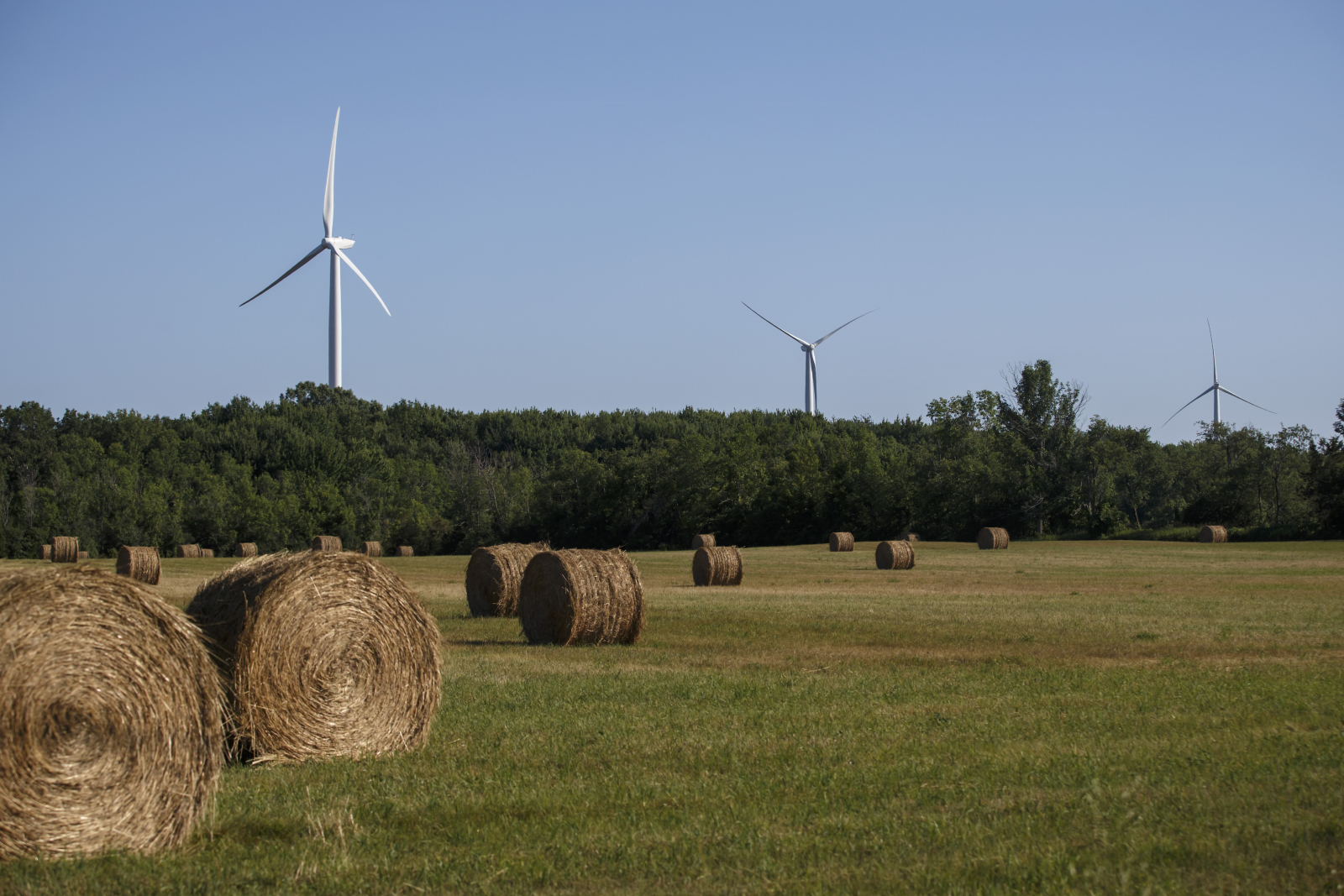
Following a provincial election campaign in which Premier Doug Ford's Progressive Conservatives had promised that Ontario would soon be "open for business," the government was announcing that it was actually going to shut down a multimillion dollar private business investment in their backyard — the White Pines Wind Project.
Todd Smith, elected as the local member of the legislature and appointed by Ford to be minister of government and consumer services, was the one who broke the news.
Smith's colleague, Greg Rickford, the minister of energy, mines, northern development and Indigenous affairs was tabling legislation to terminate the Milford project.
The news took pockets of the county by storm.
“Have you heard this?” Coun. Ferguson of South Marysburgh asked Quaiff, shocked by the text.
“What, it’s done?” the mayor responded, shocked.
The surprise, synchronized text messages signalled the end of a decades-old maelstrom surrounding the wind farm development along Milford's picturesque South Shore. Those in favour of the mill said it was a much-needed investment in the county’s sustainable future, while a determined opposition said it would infringe on the municipality's independence as well as on the unique characteristics of its natural surroundings.
The windmill controversy had been cinematic at times, replete with protests, eggs thrown and fiery insult exchanges during town hall debates over energy, heritage and the preservation of tiny critters. Over the years, the ideological battle pitted neighbour against neighbour, and friend against friend in the southern township of Prince Edward County.
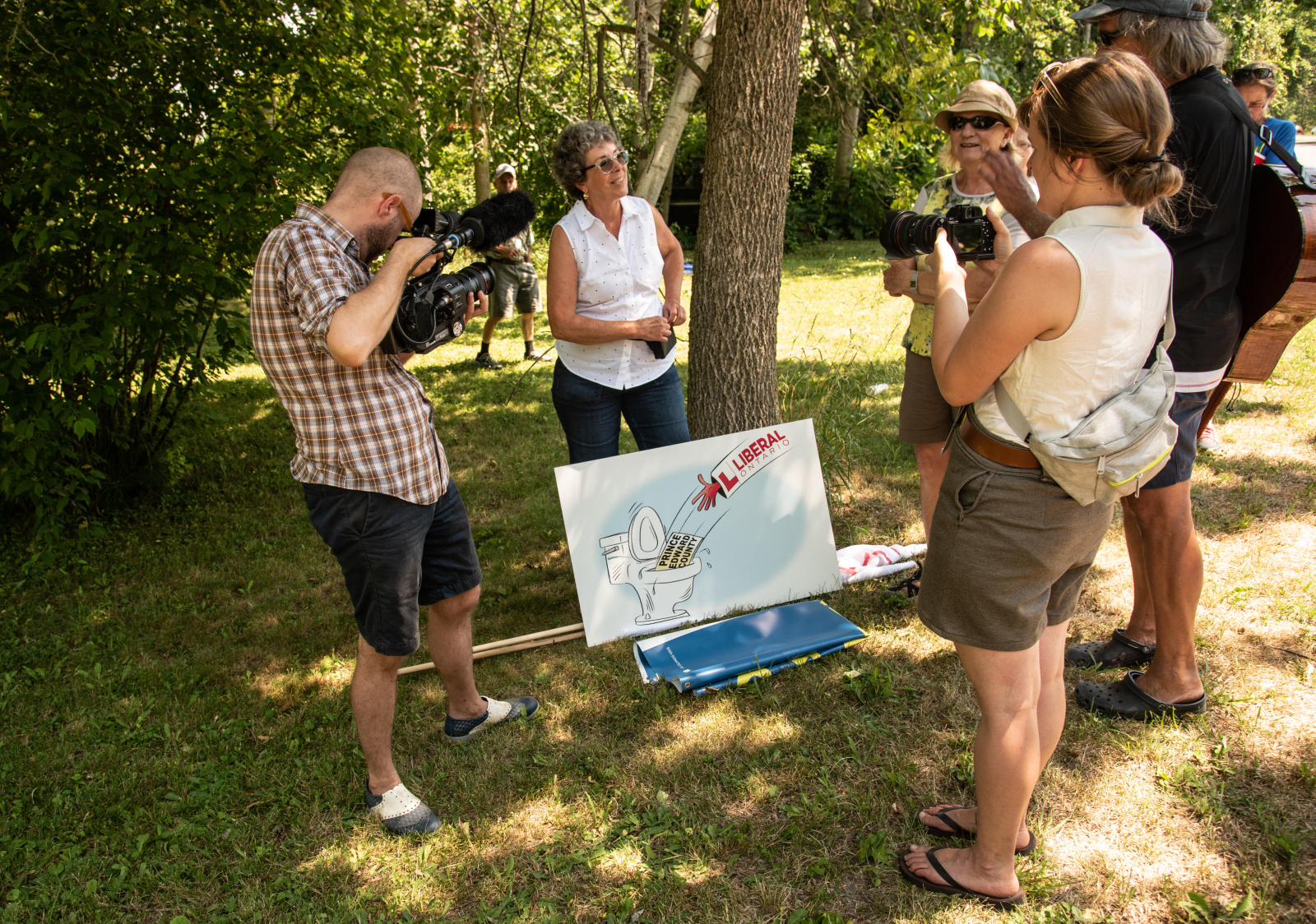
Meanwhile, that same day, Ian Macrae, president of wpd Canada — the German company that was building the wind farm — heard news of the impending cancellation from a reporter, who asked for comment over the phone. The company’s board of directors had been scrambling to understand how their contract with Ontario’s Independent Electricity System Operator (IESO) could be expropriated by a government, and sought advice from lawyers in Europe and Canada.
"Every project in Ontario has some resistance," Macrae told National Observer in an interview, "but this one, especially, it was long, it was complicated and expensive."
"Every project has its issues but this one had the best opposition," he added. "They were well-funded. They raised $1.5 million for legal funds. They were able to keep it coming."
July 10 also happened to be the day that a protest took place against the wind farm at Bond and County Road 10. Residents blocked a truck delivering giant turbine parts to the wind farm. When news of the cancellation spread, protester Cheryl Anderson, a county resident and lauded field naturalist, cried with joy.
And at a local bakery, just a short drive away from the Milford wind farm, a chalkboard sign on the pavement marked a sign of the times: “Wind turbines for sale. Contact Doug Ford.”
How a decade-old turbine clash came to an end
Scroll down to continueThe White Pines Wind Project was a decade in the making, but took only two weeks to unravel with newly-minted Premier Ford at the helm of the Ontario government.
Ford and his majority Progressive Conservative government had campaigned on the elimination of “wasteful” energy contracts, and ceremoniously moved to cancel 758 of them within weeks of taking office, arguing that this would translate into savings for consumers on their energy bills.
The swiftly-fulfilled promise garnered mixed reviews; critics lambasting the lack of proposed alternatives, supporters celebrating the long-fought victory. Overall, the decision could translate into the loss of thousands of clean energy jobs across the province at a time when countries are moving away from fossil fuels and investing trillions of dollars in new clean and green growth.
Quaiff said he was stunned: “At that point, it became pretty emotional as well.”
“Just knowing how many kilometres up and down the 401 (highway) we've travelled, the meetings that we've had, the meetings I've had with the minister of energy, and so it was an emotional rollercoaster for a lot of years and to find out that this was actually going to happen, you know, I was elated.”
“We were basically resigned to the fact that we were running out of powder,” Ferguson said of the moments leading up to the texts, “that the only thing that was going to stop this project was some kind of action by the government. And then 20 minutes later, kaboom. I was floored.”
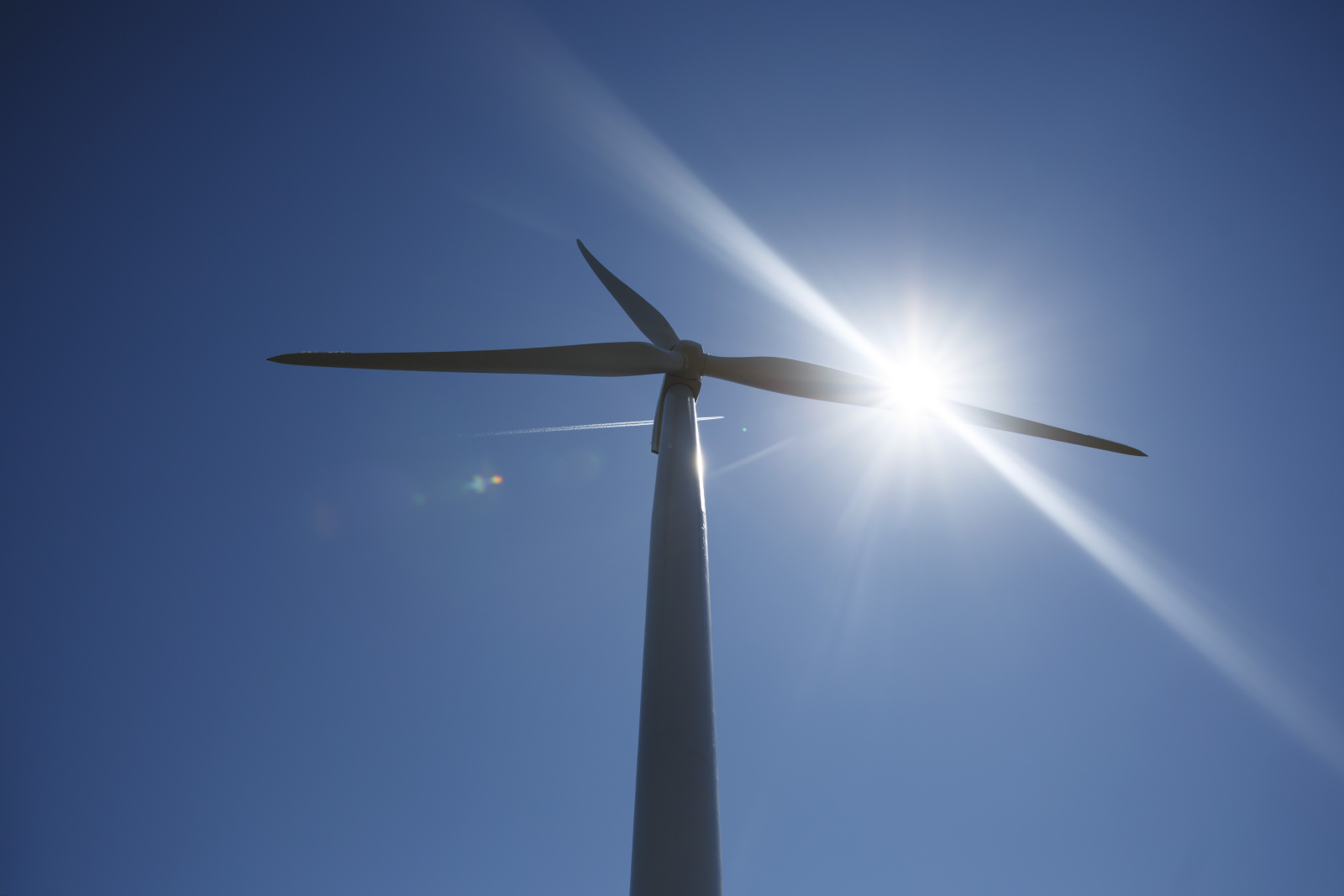
Excitement quickly turned to introspection, as Ferguson began to consider that some of the more vocal residents may be out there “gloating” about their success. “This is a situation that should begin a conversation about healing the community,” he says.
A few days later, on July 25, Ford's Tories used their majority in the Ontario legislature to adopt his omnibus bill, including the provision to cancel the mills and revoke all permits. It took less than nine days for the Tories to adopt their bill, with no effective resistance from Opposition Leader Andrea Horwath's New Democrats.
It effectively terminated one of the last green energy projects in the province.
For the 1,695 residents of Milford, the legislation that killed a nine-turbine wind farm in its backyard, like its inception, remains a controversial decision. While those who opposed the project celebrated news of what they believe is a more efficient era of environment policy, those who supported it say the Ford government sent a disturbing message to the rest of the county, and the world: Ontario no longer cares about the environment
“I’m going to cry if the three windmills I see go down”
Scroll down to continueWhite Pines could have produced 52 million kilowatts an hour of clean energy annually – enough electricity to power just over 3,000 homes, according to wpd.
As per the new legislation, work on the wind turbine came to a full halt on July 25. Some 100 workers were employed at the site for the past year have since been ordered to remove the equipment, fill in the holes and secure all construction sites.
In the immediate aftermath of the new law, no one from the government told wpd Canada what would happen next but construction continued until moments before the final legislative axe came down.
Prince Edward County is one of the most abundant regions for wind in Ontario, making it a perfect location for the turbines, said Macrae. The German wind company's initial proposal called for 29 wind turbines, but after years of protest over turtles, birds, bats and heritage preservation, the plan was reduced to nine near the South Shore of Milford. Only four of the nine sleek, 100-metre tall white turbines were erected. Their blades have yet to spin properly.
The Ministry of Environment, Conservation and Parks' Belleville office started compliance inspections for the White Pines project in the spring of 2017, to ensure the company was adhering to the conditions in its renewable energy approval.
"The ministry will monitor activities at the project location throughout the decommissioning of the facility," ministry spokesperson Gary Wheeler said in an email.
The company's contractual obligations with IESO took precedence over the impending doom that seemed to be heading the wind farm's way, Macrae said. “Even though we know we have a majority government, and we know what’s likely to happen and parliament is a democracy, anything can happen," he told National Observer in an interview.
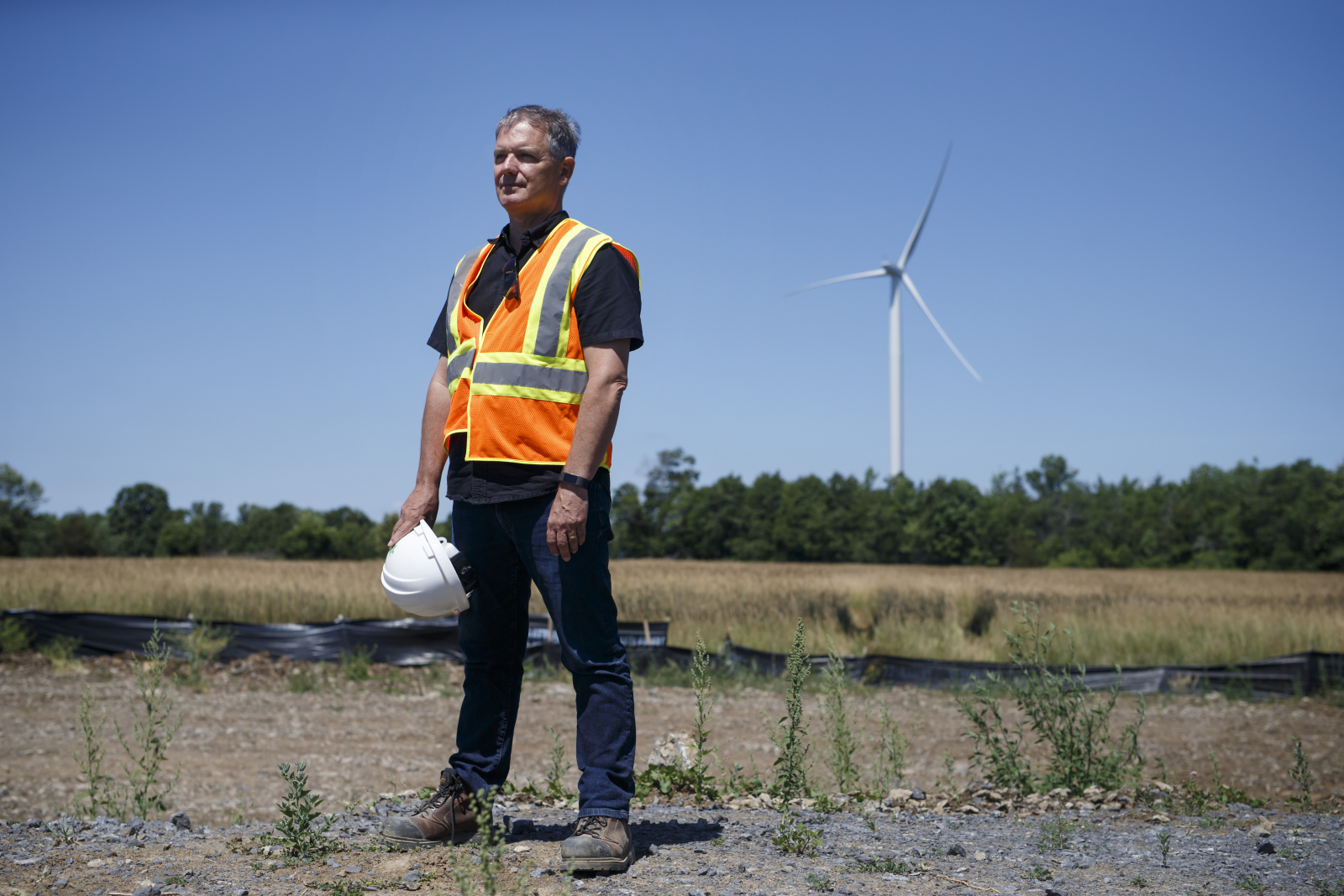
Quaiff told National Observer he has chosen not to request any meetings with Macrae, saying he saw no sense in speaking to someone he had nothing in common with, and someone he didn't want in the county.
“Why in God's name would you put industrial wind turbines in the middle of a nationally recognized migratory bird path? Why would you put it in the middle of an avlar area and species at risk? Why would you do that?" Quaiff asked.
Macrae and the company’s board of directors are looking at all their options, but can’t see a clear path ahead. Every permit the company spent years negotiating has been definitively cancelled, including the location of the wind turbines, habitat protection measures, land rehabilitation, and conditions for the construction of access roads.
“I don’t know the mechanism by which (these permits) can ever reappear,” Macrae told National Observer the morning after the bill was enacted. The company has invested more than $100 million in the project, including fees from all the legal battles they’ve been compelled to join, which wpd has said it will seek to recover from Ontario.
“We’re reading the legislation and kind of accepting what the words say, but we need further details. We need to talk to the various ministries. We’re disappointed.”
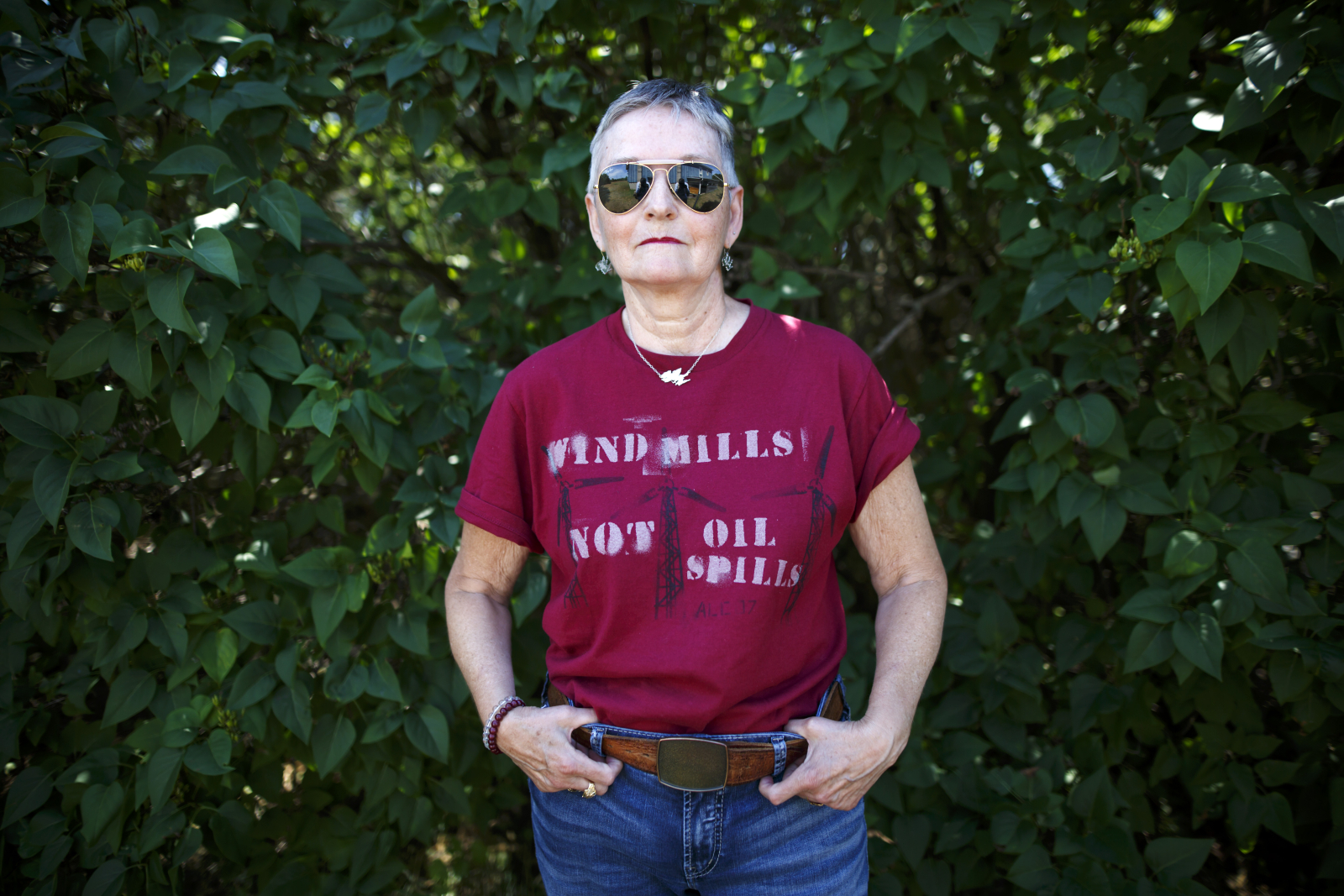
The company isn’t alone in its disappointment. Every morning, Angela Lammes opens the curtains in her kitchen window to greet the three windmills visible across the way. She points them out excitedly to visitors, giving them a tour of all the spots in her house you can see them from. They dot the horizon over the laundry line diagonally placed in her backyard, framing an endless sea of overgrown wheat-filled farm land.
“First they create and then they destroy,” she said. “I’m going to cry if the three windmills I see go down.”
Down the road, her friend Jennifer Ackerman has an equally marvellous view from her 165-acre farmland property.
“The windmills are the only thing of excitement around here,” she said, surrounded by chickens, roosters, ducks, a donkey, and an especially friendly white alpaca.
Ackerman first heard about wind power 15 years ago at a town hall meeting, and without hesitation, offered up her land for a turbine or two. People thought she wanted the money – landowners part of the wind project were set to gain approximately $30,000 annually as compensation for the use of their property.
“It’s ridiculous. They can take my money. I don’t need or want the money,” she said. “I love it. I love the windmills.”
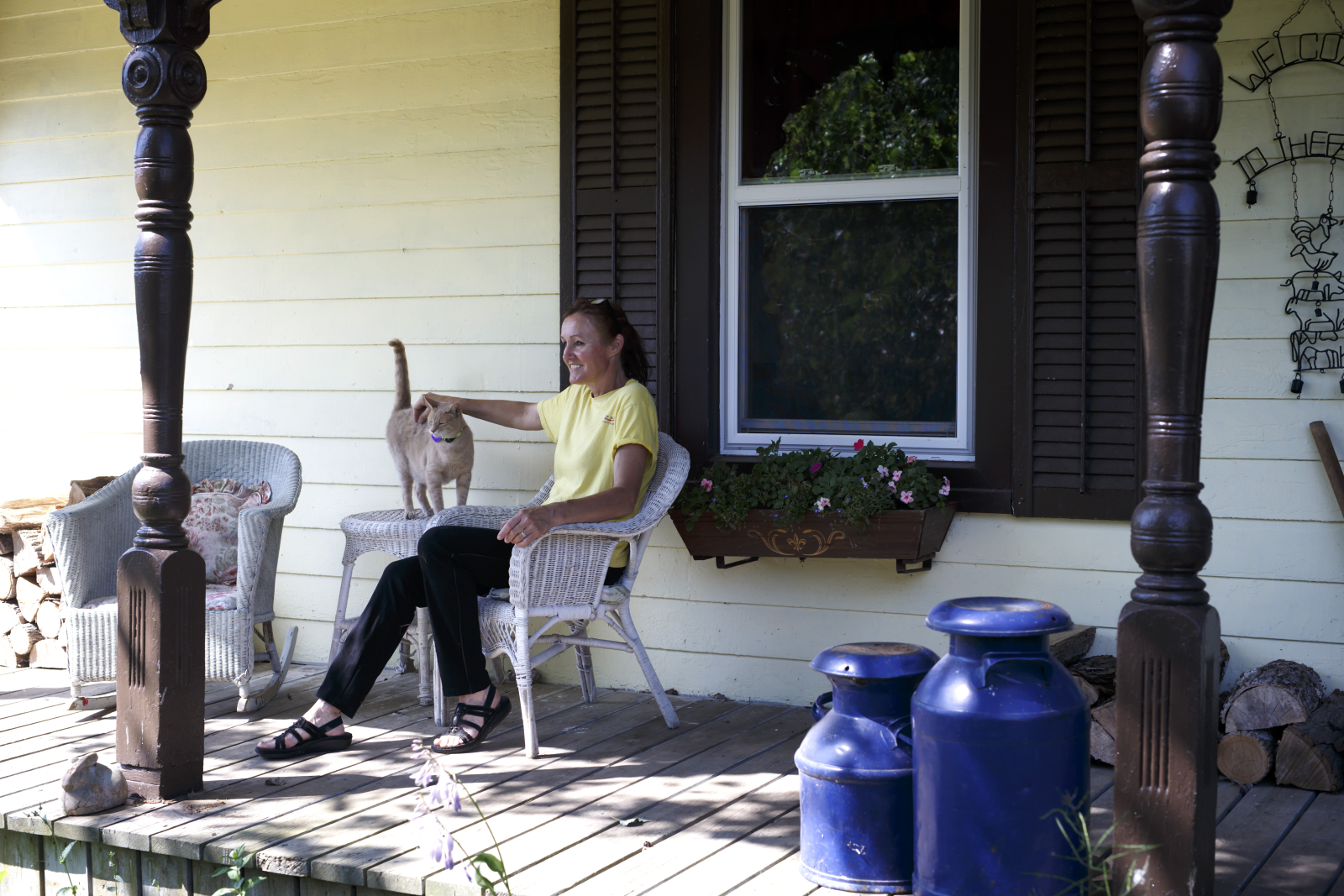
The contraptions have created smooth access roads that the farmers she rents her fields to are happy to use to get to their crops, she explained. The base of the turbines have also cleared paths for wheat and animal life, and some have seen horses stand there to bask in the cool air during the turbines’ trial runs.
A war of words
Scroll down to continueAckerman’s bakery has been boycotted by many of the county’s residents because of her pro-windmill stance. Among her remaining regulars are a group she has dubbed the “Assembly of Gentlemen” — a gathering of workers, wind energy advocates, business men and local leaders.
Most days, between nine to 15 people show up.
Two days after the legislation was tabled, the group was especially rowdy. Together, they had spent the last decade researching wind energy and debating its merits, and were now resolved to estimating the costs to shut it all down.
“We’re all aware of the pros and cons of the windmill project,” said Liam McConnell, a longtime resident who was against the wind farm at first, because he didn’t think the county needed it, but has since changed his stance.
“We have spent so much money on it it makes no sense to stop it now,” he said.
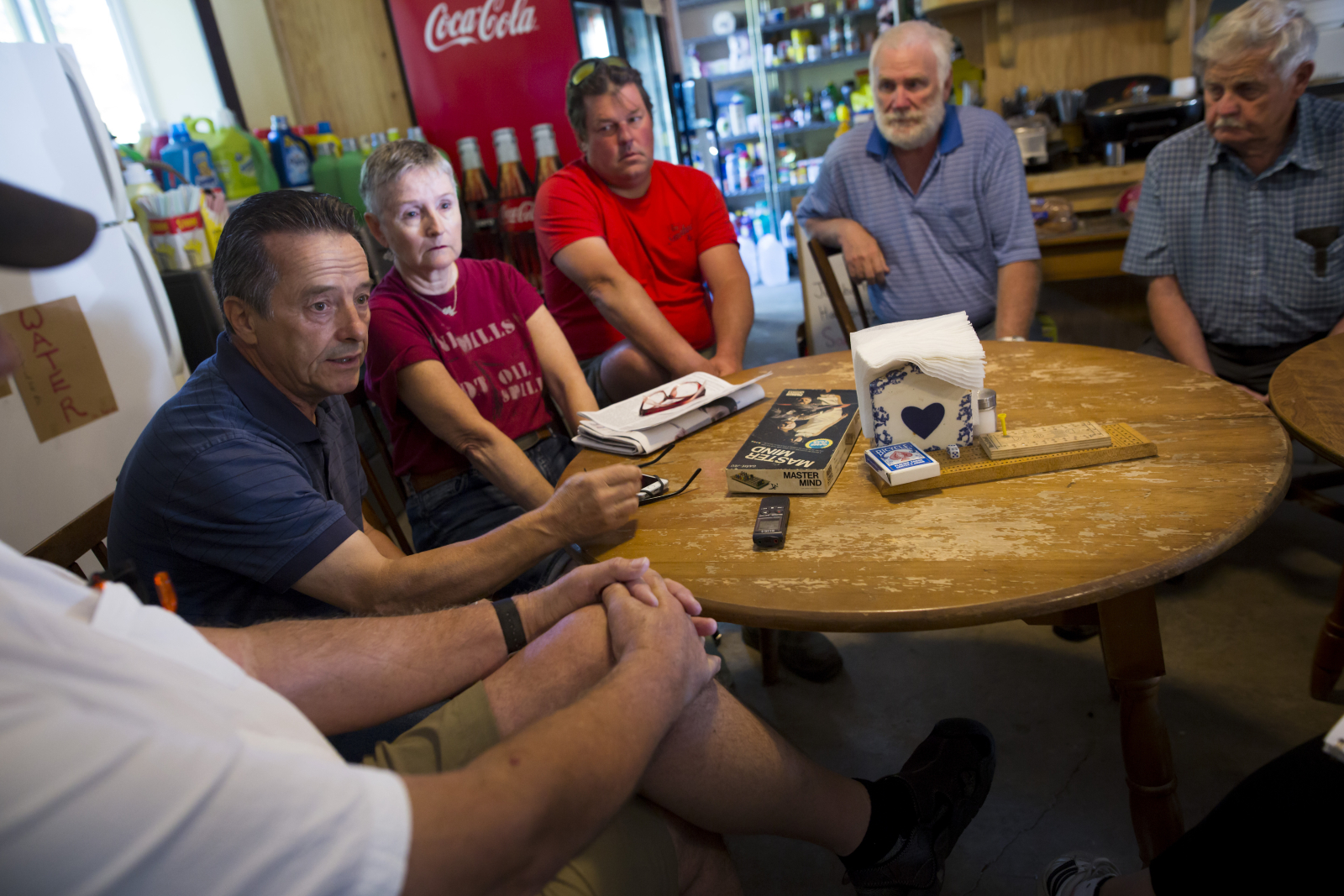
McConnell’s friends agreed, livid that a decade of time and energy invested would soon count for nothing. The wind farm, they lamented, would join the list of clean energy projects the county had seen fail over the years.
“The people who live here and work here don’t have time to protest, but the people who have moved here recently and have done their retirement plans — they’re the ones that don’t want it in their backyard,” said Mike Platt, an engineer who works in solar development, and a 30-year resident of Milford.
“They’re the NIMBYs.”
Over the years, the war of words over the wind farm has even threatened to turn physical.
The week of the cancellation announcement, a construction worker for the wind farm came in to Ackerman’s bakery, shaken and distraught, she described. He was guiding traffic on a construction site and waving at an oncoming driver to slow down.
Instead, she sped up, aiming straight at him. He dove into a ditch.
“She was yelling at him and raising her middle finger,” Ackerman said. “He had never seen that before.”
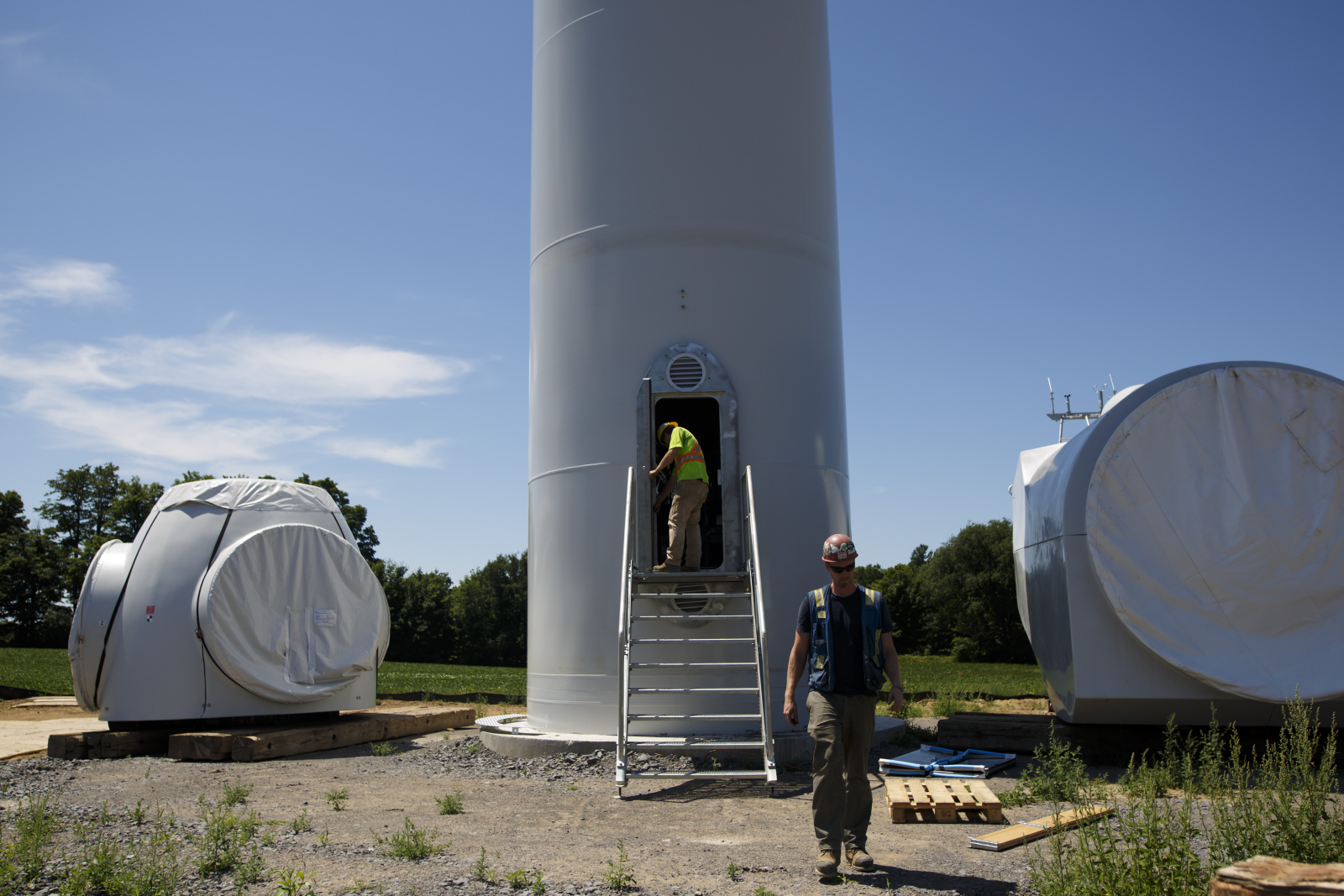
Confrontations like these haven’t been unheard of since construction began on the wind farm last year. Those vehemently opposed to the wind farm have been known to throw things at construction workers around the county – everything from eggs to garbage.
Coun. Ferguson, who said he receives up to 15 calls daily from some residents about the wind farm, has been galled by the behaviour, and apologized to victims on the behalf of the small, but aggressive group of offenders.
“It's inexcusable,” he told National Observer. And I've taken people to task for that. I told people, this has nothing to do with a guy that is out there doing a job to feed his family.”
“Nobody could have expected the twists and turns”
Scroll down to continueOver the years, the Assembly of Gentlemen and their friends have watched wind farm opponents pour hundreds of thousands of dollars into lawsuits to stop the project. The first one was a $14 million suit filed on July 31, 2012 requesting “an interim, interlocutory, and permanent injunction restraining the construction and operation of all or part of the White Pines Wind Project.”
Many argue the benefits of the wind farm are bellcurved in favour of a very small group of community members.
“I fully understand and appreciate that some landowners … will be paid to host a turbine site,” Ferguson told National Observer over the phone.
“And that's fine, but I also understand that their neighbours, residents close by, will not be sharing in – certainly not be sharing financially," he says. "The health effects, and so forth, that have to be considered as well.”
Early on in the saga, the Alliance to Protect Prince Edward County (APPEC) — a group that was formed 10 years ago in response to the proposed wind farm, and has been in and out of the litigation with wpd since 2013 — tried to fight the project on the basis of risks to human health. But an Environmental Review Tribunal dismissed the organization’s appeals, finding that no serious human health risks could be proven — no dangerous stress levels nor effects on sleep would result from the low frequency noise of the turning mills. This conclusion was echoed by a study conducted by Health and Statistics Canada in Southern Ontario and Prince Edward Island on wind turbine noise exposure.
Many wind farm opponents contextualize their dissent with a brief history of the region. Prince Edward County was settled in the 18th century by United Empire Loyalists — and remains in relatively the same state it was founded in. It has thrived over the last several decades, as the tourism and wine industries have changed the workings of the region, making it one of Ontario’s most attractive retirement spots, as well a favourite among campers, cyclists, bird-watchers, beach-goers and artists.
“The South Shore is one of the last bits of undeveloped shoreline on Lake Ontario,” said Liz Driver, director of the Campbell Museum in Toronto and owner of a 100-acre farm that lies in the path of the White Pines Wind Project. “It is precious...it has a very special environment that is rare.”
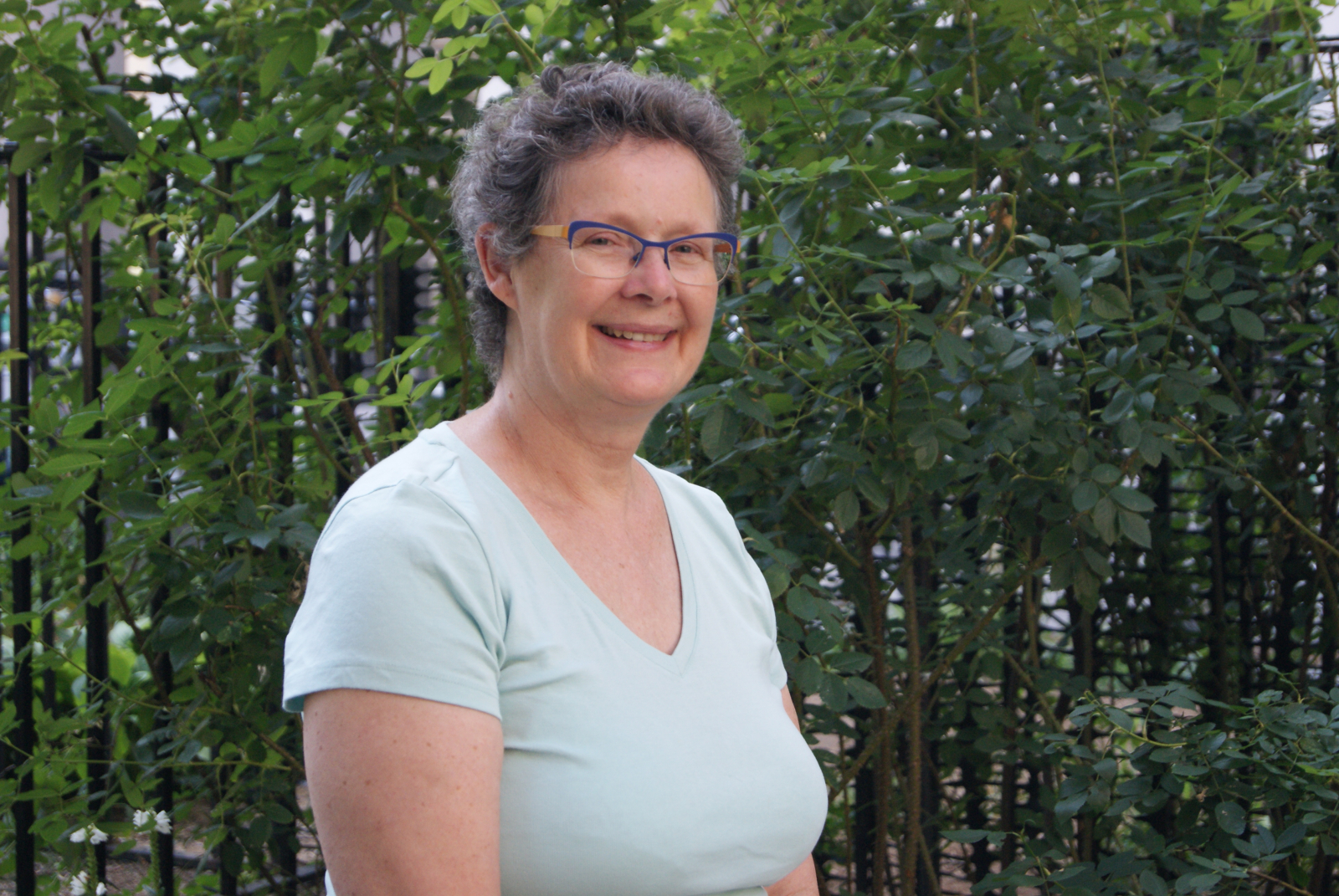
Driver is one of the original members of APPEC. The legal processes have cost them and collaborating groups like the Prince Edward County Field Naturalists over $1.5 million, collected through garage sales, natural walks, food tastings, fundraising dinners, personal contributions and small amounts from conservation groups outside the county.
"Some may think that we have been funded by external enterprises or interests, this is not the case," APPEC president Orville Walsh said. "Fundraising has consumed a good portion of our human resources over the past three years and isn’t over yet."
Driver and her husband have personally spent more than $300,000 in legal fees in an effort to preserve the county’s heritage value — relying on their salaries and a line of credit secured by their Toronto home, which they are still paying off.
The wind farm is planned around 11 properties protected under the Ontario Heritage Act and 74 identified cultural heritage resources, including five cultural heritage landscapes, Driver noted. She learned how to write affidavits just for the cause; one of the protected landscapes is part of her farm's backyard, threatened by three planned turbines.
“It’s only when something is threatened that you realize how special a place is, and of course you trust the government to administer a process which will make sure the special things are not lost,” Driver said. “So at first it wasn't so much about being against it as being, you might even say watchdogs. We’re there to protect it. To participate.”
Two days after the Ford government tabled the legislation to cancel the White Pines Wind Project, Driver and Walsh sat in a Toronto courtroom filing what would be their last motion to stay construction on the wind farm. The motion was pegged to Ford’s announcement in an effort to speed up the project’s definitive cancellation.
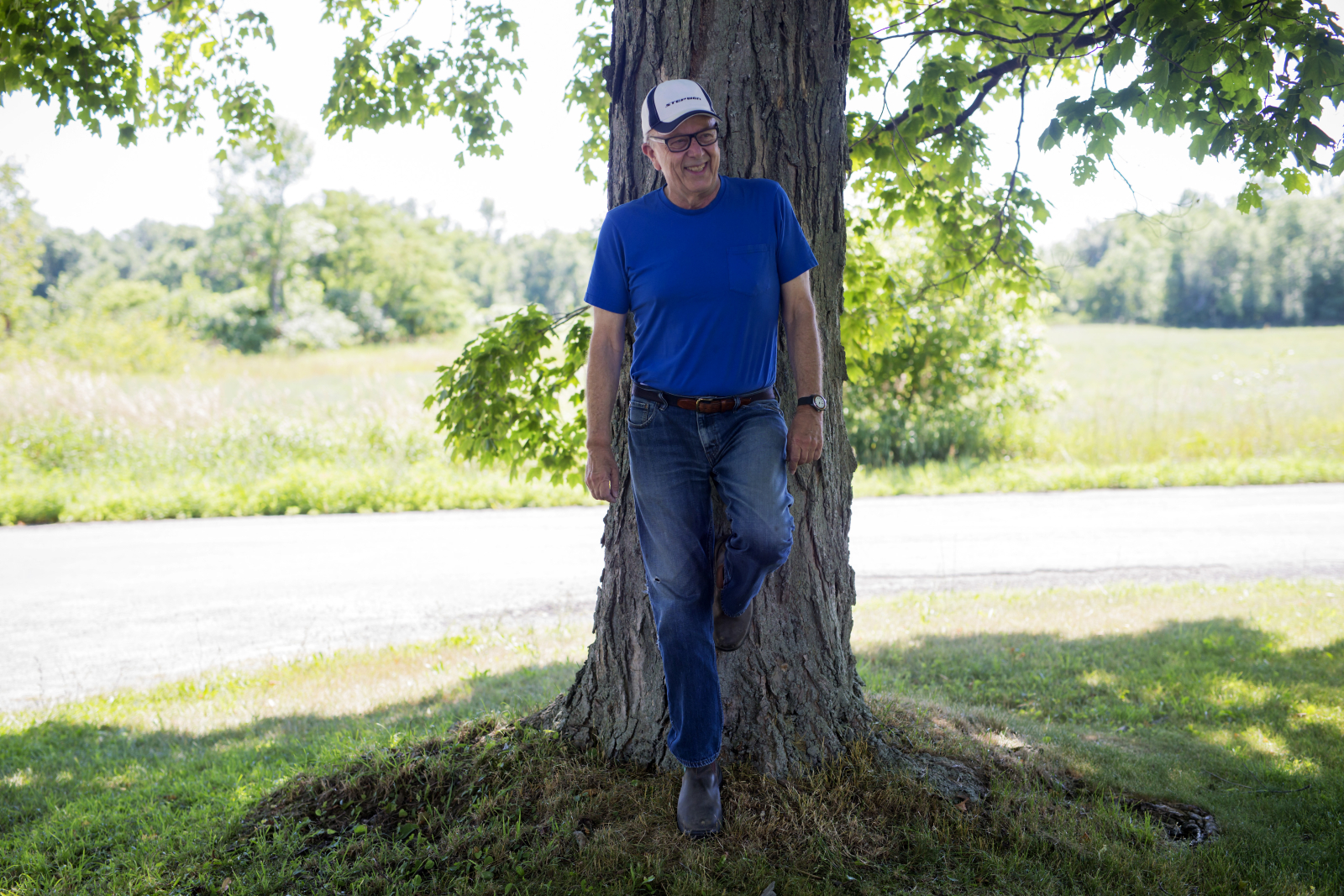
According to the 2012 Ontario Environmental Review Tribunal decision, which dictated the terms and conditions of the construction, wpd cannot build between May and October – the nesting period for the endangered Blanding’s turtle — but it was allowed to proceed with some activity after verifying if any turtles were present. The company and provincial officials said workers followed these rules in the first two weeks of July as they erected three turbines.
Only one turbine was located in Blanding’s turtle habitat.
Macrae said the bases of these turbines had been built already and all that needed to be done was to assemble the pieces of the windmill.
Based on the rules, if any turtles were to be found on site during a sweep, Macrae said that workers would have to leave and wait for the reptiles to abandon the area on their own, before resuming the work. “We don’t want to hurt the turtles,” he said.
Still, Walsh believes the company keeps making excuses in order to finish a project no one wants in the region. “People have characterized (the company’s) actions as bullying essentially,” he said. His biggest point of contention is that IESO gave the final approval for the project during the provincial election campaign in May, “quietly” and “in secret,” according to Walsh.
In an email, an IESO spokesperson told National Observer, "White Pines had met all of the conditions necessary to be issued Notice To Proceed." The email added that IESO’s "right to terminate the contract prior to issuing Notice to Proceed was waived in 2011 as a result of a Minister's directive."
Nevertheless, APPEC members like Walsh and Driver hope that people understand they’re not fighting the project for themselves, but for all of Ontario—and the proof is in the way the wind farm has come to an end.
“This has been an exceptional project that, at this point, has been killed by (a government) bill,” Driver said. “The legislation is extraordinary. Nobody could have expected the twists and turns.”
No religion, no politics, no wind turbines at the dinner table
Scroll down to continueNot long before this last filing, John Hirsch, too, celebrated the project’s impending demise as a board member of the Prince Edward Point Bird Observatory. He, like many of the project’s opponents, considers himself an environmentalist who supports clean energy — but in the right location, and not at the cost of conservation.
“I am an environmentalist. I do believe in climate change,” he explained. “I do believe in green energy, but green energy should only be in the right places, and the very environmentally sensitive South Shore of Prince Edward County is, in many experts’ opinions, the worst possible place to put a wind farm.”
Early on in the saga of wind farm opposition, APPEC was trying to fight the project based on claims of risks to human health, a position that wasn't supported by scientific evidence.
Hirsch knew they’d have to fight on the basis of protecting the birds and the bats. So he looked up how to file an appeal, soon being named in Hirsch v. Ontario. After a 15-year long career in government, he didn’t think it would be too hard.
Currently, he’s a board member for the County Coalition for Safe and Appropriate Green Energy (CCSAGE), a group that was set up, in part, to oppose Ontario's Green Energy Act.
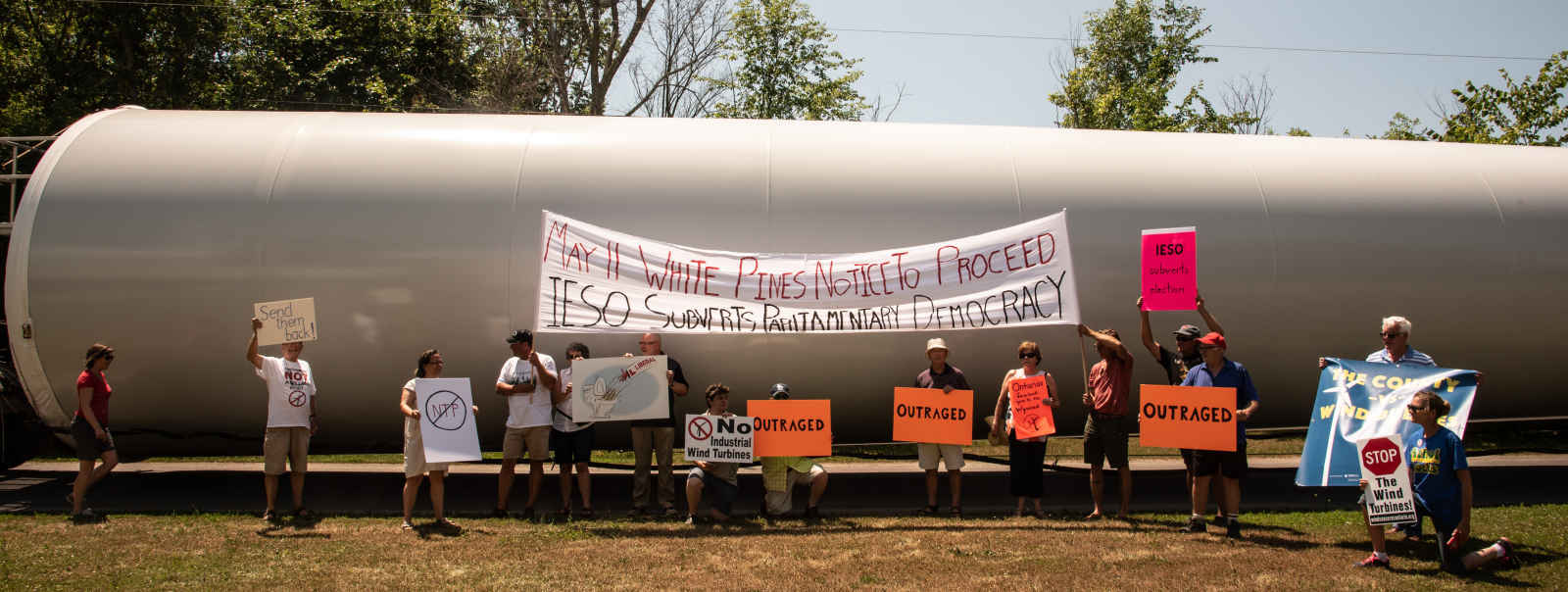
“We're taking a little different tack,” he explained, adding that the groups involved along the way have been working with them to fundraise. Most people don’t understand, he explained, that the best strategies for reducing our carbon footprints are more in transportation fuels.
“You’re never going to have a wind farm in Toronto – it’s just not possible,” said Hirsch. “You just can’t site wind farms where people live. So by default then, the only place they can happen is in rural settings like the south end of Prince Edward County.”
The green energy legislation, enacted by then-premier Dalton McGuinty in 2009, was intended to ramp up Ontario’s presence in the renewables industry — to create jobs, and a system for rate-setting green energy sources (known as feed-in-tariffs). At the time, McGuinty said he would honour individual communities’ opposition to participating, but wouldn’t tolerate not-in-my-backyard attitudes on renewable energy projects, as reported by the Toronto Star in the legislation’s early days.
“I think people have not even paid the slightest bit of attention to the undemocratic nature of the Green Energy Act. It just galls me that Dalton McGuinty got an award from the Sierra Club. It galls me that David Suzuki would even support such a thing,” Cheryl Anderson said. The Picton, Ont. resident had previously helped lead the charge against Gilead Power's wind farm at Ostrander Point. “They don't take time to think things through, look at the issues and say, ‘Gee, maybe there’s another way we can get there.’”

A poll taken a few years after painted the picture both she and Hirsch had long presumed to exist. Ferguson, as publisher of the South Marysburgh Mirror, created a survey in 2012 asking, “Do you want industrial wind turbines installed in South Marysburgh like the ones proposed by wpd Canada and Gilead Power for their projects near Milford and on the South Shore?”
Ninety per cent of respondents voted no, although supporters of the wind farm contest its accuracy. Ferguson says “it was run like an election.” To vote you had show identification as proof you live in South Marybsburgh. The vote was by ballot that required residents to check yes or no in response to the question: “Do you want industrial wind turbines installed in South Marysburgh like the ones proposed by wpd Canada and Gilead Power for their projects near Milford and on the south shore?” Many supporters said they were not invited to participate.
The survey was extolled by MPP Todd Smith. “This is how democracy is supposed to work,” he said at the time. Residents who oppose the wind farm say Smith, unlike the Liberal government, heard them.
"We've been working at this for 10 years and the people from Toronto still do not seem to get it,” Anderson explained, “that we're not against green energy, we just want to protect important habitat and look after biodiversity, and so it's important that green energy is situated in places where that is not being hurt.”
For her, it’s all about the birds.
Chapter header photo by Michael Lindon
An uncertain future
Scroll down to continueLocal residents say that everyone is tired of the debate. A plethora of facts, figures and arguments have been floating around the community for a decade; every resident appears to have their own opinion about what the wind project is and what impact it has had on the community.
“If you say something loud enough, hard enough, long enough, it becomes true because it takes time to learn the other reality,” says Don Ross, co-founder of the County Sustainability Group – a vocal proponent of the White Pines Wind Project.
“They want it to be paradise,” says his wife, Heather Ross. “And for some reason, the turbines are going to spoil that. We don’t get it.”
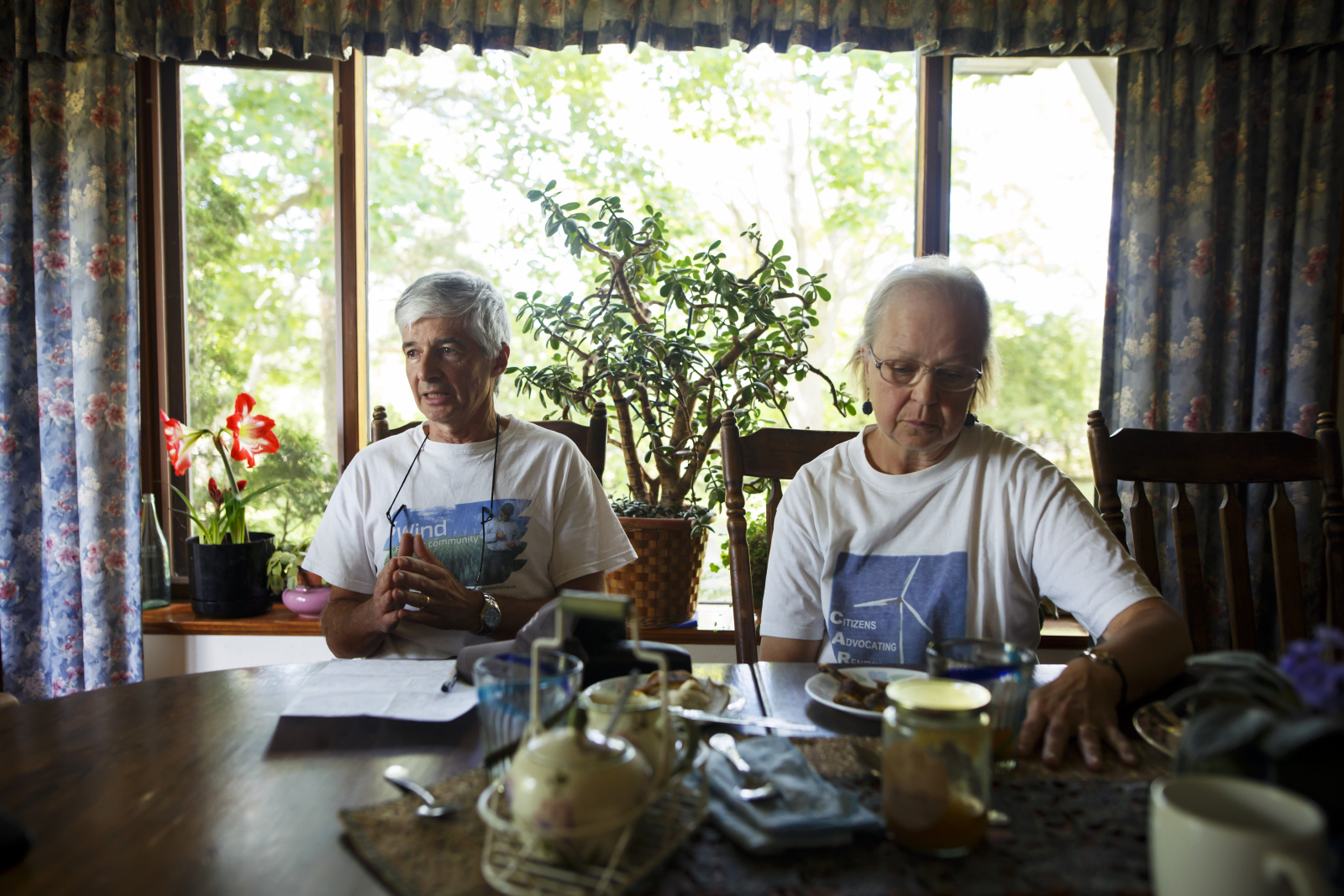
Alison Hicks – who has lived in the county since she was 11 years old, and in Milford for 23 years – thinks it's a lot of fuss.
“There’s just so many other things going on in the county that are disturbing the habitat, and yet they’re not even being paid attention to,” she says of things like run-of-the-mill farming activity, which she says she’s seen infringe on the Blanding’s turtle habitat the day she watched a tractor nearly crush a shell, leaping off her bike to move it out of harm’s way. She talks about the removal of maple trees from the roadside, without a peep. “It's just all focused on the windmill project.”
Still passions ran high until the very last second. The day before the legislation to cancel the wind project passed, John Manley, president and CEO of Business Council of Canada, wrote a letter to Ford, urging him to reconsider the cancellation of the project. Manley wrote he was concerned the decision would “undermine investor confidence and set an unfortunate precedent for how the government intends to deal with the private sector,” and other such “potential lasting negative effects.”
Manley, a former federal Liberal cabinet minister, echoed concerns about Kinder Morgan’s Trans Mountain pipeline expansion — that another energy project that had received all the necessary permits might end up cancelled.
“We certainly do not question your government's right to adjust Ontario's future electricity supply mix,” he wrote. “Among Ontario's strengths are its reputation for fair dealing and respect for the rule of law. Many of the business leaders I represent are concerned that this hard-earned reputation is at risk.”
“Premier, in the recent Speech from the Throne your government says it intends to ‘send a message to the world that Ontario is open for business.’ We applaud that sentiment, but the unfortunate reality is that the White Pines Wind Project Termination Act sends a different and much less welcoming message.”
Nevertheless, on July 25, the project was cancelled. It's not clear what happens to the four completed turbines, or the remaining pieces neatly lying on private properties along Milford's southern shore.
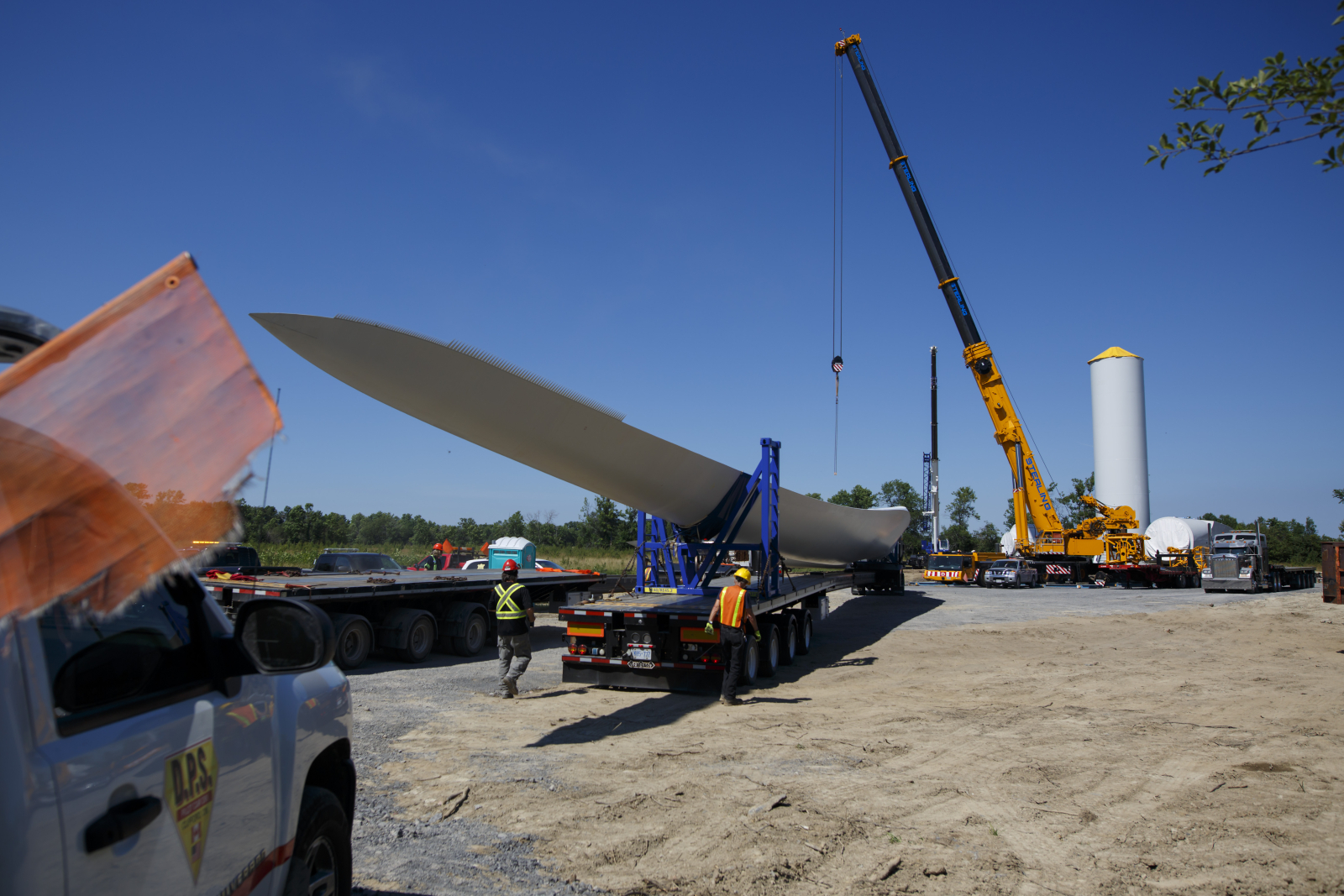
As Mayor Quaiff rejoiced in what he believed was the end of this hard fought battle, he saw more turbines emerging on the horizon.
"How arrogant a company can be that they know this is in the process of cancellation?" he asked. "It's going to be so gratifying to see that last turbine component going out on a tractor trailer."
While the community has yet to have a moment to take a breath and understand what’s to come, most think the dynamics will mend, in time. Others say they might spending some time mourning what they believe was lost.
"We have a government that campaigned on doing what they're doing. I don't think they really investigated before they shot their mouths off of what can happen. They're not aware of the fallout,” McConnell says.
“They're like Donald Trump. They just keep yap yap yapping and let the chips fall where they may.”
Reflecting on the decade he has fought for the windmills, and many years before that, Ross shakes his head in slight dismay.
“If I was coming from another planet and saw people getting free, clean, indefinite, infinite fuel from the wind and the sun I would think that was sign of intelligent life."
Editor's note: this story was edited at 5:50 EST on Friday Aug. 3, 2018 to accurately reflect the height of the wind turbines. We regret the error.
